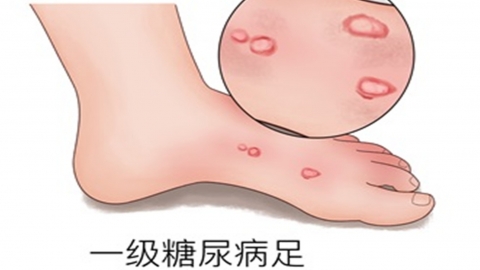What is diabetic foot?
Generally, diabetic foot may be caused by improper foot care, long-term smoking, diabetic peripheral neuropathy, diabetic peripheral vascular disease, foot infections, and other factors. If discomfort symptoms occur, it is recommended to seek timely treatment at a qualified hospital. Specific analysis is as follows:
1. Improper Foot Care
Diabetic patients who neglect foot hygiene or frequently wear tight, stiff shoes are prone to foot skin injuries, increasing the risk of diabetic foot. Daily routines should include washing feet with warm water, avoiding excessively hot water, drying feet thoroughly after washing, wearing loose and soft shoes and socks, and avoiding foot pressure and friction.
2. Long-Term Smoking
Smoking damages vascular endothelial cells, leading to narrowing or occlusion of lower limb blood vessels, affecting blood supply to the feet and worsening diabetic foot conditions. Strict smoking cessation is necessary, along with avoiding secondhand smoke to improve foot circulation.
3. Diabetic Peripheral Neuropathy
Long-term high blood sugar can damage peripheral nerves, causing reduced or lost sensation in the feet. Foot injuries may occur unknowingly, leading to diabetic foot. Under a doctor's guidance, nerve-nourishing medications such as mecobalamin tablets, epalrestat tablets, and alpha-lipoic acid injections can be used to improve nerve function.

4. Diabetic Peripheral Vascular Disease
High blood sugar causes atherosclerosis in lower limb vessels, narrowing the vascular lumen, resulting in insufficient blood perfusion to the feet, tissue ischemia and hypoxia, leading to diabetic foot. Under a doctor's guidance, medications such as cilostazol tablets, alprostadil injection, and beraprost sodium tablets can be used to dilate blood vessels and improve foot circulation.
5. Foot Infection
Diabetic patients have lower immunity; once foot injuries occur, they are susceptible to bacterial and other pathogenic invasions, leading to infection, worsening foot damage, and triggering diabetic foot. Under a doctor's guidance, medications such as amoxicillin capsules, cefuroxime axetil tablets, and clindamycin phosphate gel can be used to control infection, along with proper wound debridement and care.
In daily life, strict blood glucose control and regular blood glucose monitoring are essential; keep feet dry and clean to avoid injury; perform appropriate foot massage to promote blood circulation; regularly visit the hospital to check foot conditions for early detection and timely treatment of abnormalities.







